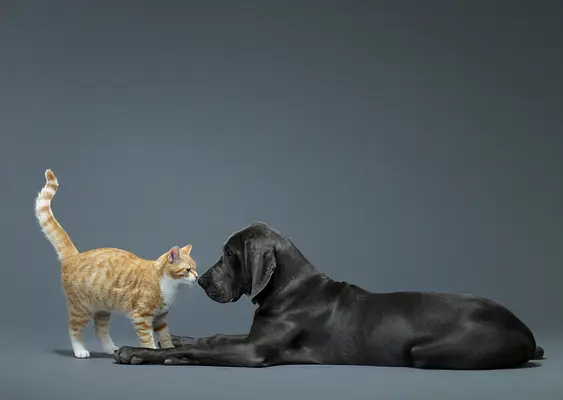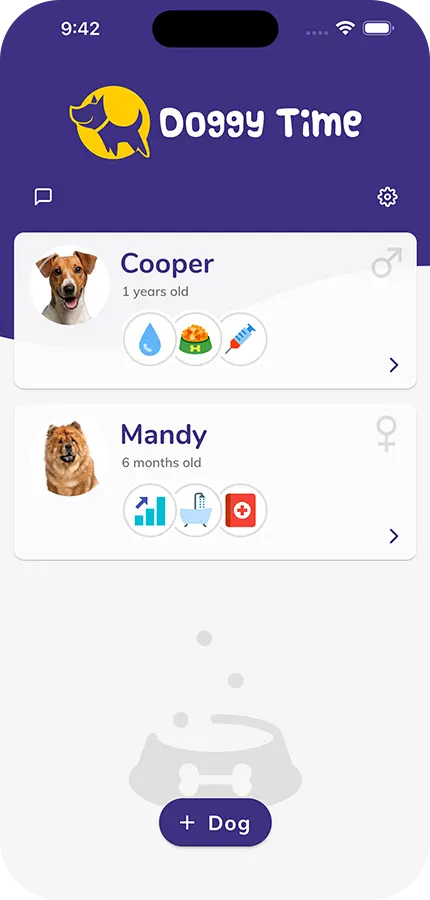Bringing home a new puppy is an exciting adventure, but when you already have pets in your household, the introduction process requires thoughtful planning and patience. A harmonious multi-pet household doesn't happen overnight, but with the right approach, your furry family members can become the best of friends. Let's explore how to make this transition smooth for everyone involved – both the two-legged and four-legged family members!
Preparation: Before Your Puppy Arrives
Set Up a Safe Space
Before bringing your new puppy home, create a designated area where they can retreat when feeling overwhelmed. This space should include:
- A comfortable bed
- Appropriate toys
- Food and water dishes
- A crate (if you're crate training)
This area will serve as your puppy's sanctuary during the adjustment period and gives your resident pets space to observe the newcomer from a distance.
Scent Introduction
Animals communicate largely through scent. Help your pets become familiar with each other before they meet face-to-face:
- Bring home a blanket or toy with your new puppy's scent for your resident pets to investigate
- Take a towel that has been rubbed on your current pets and let the puppy sniff it at the breeder's or shelter
- Swap bedding between pets after the puppy arrives to continue the scent exchange
The First Meeting: Setting the Stage for Success
Choose Neutral Territory
When possible, arrange the first meeting in a neutral location:
- A neighbor's yard
- A quiet park
- An unfamiliar room in your home
This prevents territorial behavior from your resident pets who might view the newcomer as an intruder in "their" space.
Keep It Controlled
During initial introductions:
- Keep dogs on leashes
- Have treats ready to reward calm behavior
- Ensure each pet has an escape route
- Keep the sessions short – quality over quantity!
Species-Specific Introduction Tips
Introducing a Puppy to Resident Dogs
- Parallel walking: Walk the dogs side by side with two handlers, gradually decreasing the distance between them
- Observe body language: Look for play bows, relaxed tails, and calm behavior
- Respect the hierarchy: Allow your resident dog to establish boundaries with the puppy
- Supervise all interactions: Never leave them alone together until you're confident in their relationship
Introducing a Puppy to Resident Cats
- Use baby gates: Allow visual access while maintaining physical separation
- Respect your cat's space: Ensure your cat has high perches and escape routes
- Control the puppy: Teach your puppy that chasing cats is not acceptable
- Reward calm behavior: Treat both animals when they're relaxed in each other's presence
Introducing a Puppy to Smaller Pets
- Exercise caution: Some breeds have high prey drives
- Create safe spaces: Ensure small pets like rabbits or guinea pigs have secure enclosures
- Gradual exposure: Let your puppy see and smell smaller pets from a safe distance
- Never force interaction: Some pets may never become friends, and that's okay
Managing the Ongoing Relationship
Maintain Individual Attention
Each pet needs one-on-one time with you to prevent jealousy:
- Schedule special playtime with each pet
- Maintain separate feeding areas
- Continue individual training sessions
Watch for Stress Signals
Be vigilant for signs of stress in any of your pets:
- Excessive hiding or withdrawal
- Changes in eating or elimination habits
- Destructive behavior
- Aggression or excessive vocalization
Celebrate Progress
Remember that building relationships takes time. Celebrate small victories:
- The first time they sleep near each other
- Sharing toys without conflict
- Playing together appropriately
Common Challenges and Solutions
Resource Guarding
If pets guard food, toys, or your attention:
- Feed pets separately
- Provide multiple toys and beds
- Teach a "leave it" command
- Reward sharing and peaceful coexistence
Overexcited Play
When your puppy doesn't understand boundaries:
- Interrupt play before it escalates
- Provide appropriate outlets for puppy energy
- Teach a reliable "settle" command
- Reward calm behavior around other pets
Tracking Progress with Technology
Keeping track of your puppy's integration with resident pets can be challenging, especially when multiple family members are involved in the process. The Doggy Time app can be a valuable tool during this transition period. This handy app allows you to log interactions between pets, track training progress, and set reminders for supervised play sessions. You can collaborate with family members to ensure everyone is on the same page about your pets' relationships and development.
With Doggy Time's scheduling features, you can create a consistent routine for introductions and training, which is essential for helping all your pets adjust to their new family dynamic. The app's puppy potty log and activity tracker also help you monitor whether the stress of new introductions is affecting your puppy's daily habits.
Final Thoughts
Building a harmonious multi-pet household is a journey that requires patience, consistency, and understanding. By respecting each animal's individual needs and pace, you'll create a foundation for lasting friendships. Remember that some pets become best buddies right away, while others may take months to fully accept each other. The key is to remain positive, patient, and proactive throughout the process.
Disclaimer: While this article provides general guidance for introducing pets, each animal has unique temperaments and needs. If you observe concerning behaviors such as persistent aggression or extreme fear, please consult with a professional animal behaviorist or veterinarian. The health and safety of your pets should always be your top priority.






